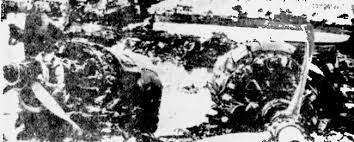Crash of a Rockwell Aero Commander 560F off Saint Ann's Bay: 2 killed
Date & Time:
Apr 14, 1976
Registration:
N1902S
Survivors:
No
Schedule:
Barranquilla - Miami
MSN:
560-1226-50
YOM:
1962
Crew on board:
1
Crew fatalities:
Pax on board:
1
Pax fatalities:
Other fatalities:
Total fatalities:
2
Circumstances:
En route from Barranquilla to Miami, the pilote informed ATC about an engine failure and elected to make an emergency landing when the airplane crashed into the sea off Saint Ann's Bay. Both occupants were killed.
Probable cause:
Engine failure in flight for unknown reasons.






